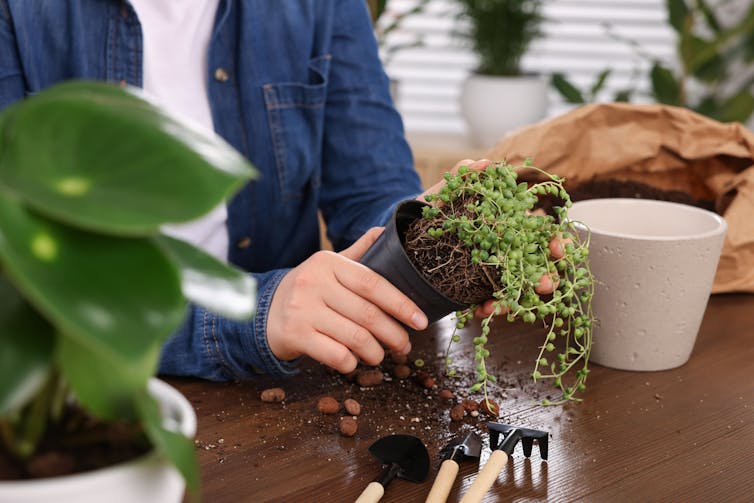
As 2024 is drawing to a close, Conferences of the Parties (COPs) of three major Multilateral Environmental Agreements are happening in close succession: COP 16 of the Convention on Biological Diversity (CBD) was held between end of October and the beginning of November, COP 29 of the UN Convention on Climate Change (UNFCCC) is happening in mid-November, and COP 16 of the UN Convention to Combat Desertification will take place in early December.
Although exploring the synergies between these three COPs is of great importance and their close temporal proximity this year facilitates such discussion, I will focus solely on the CBD COP 16 as I had the opportunity to attend it in person as a University of Bristol academic observer.
CBD COP 16, held in Cali, Colombia started on the 21st of October and was due to end on the 1st of November. Negotiations overrun until the morning of the 2nd of November but they were suspended as the quorum was lost, leaving discussions on some key issues such as the strategy for resource mobilization to be resumed at a later date.
As biodiversity COPs are held biannually, COP 16 was the first COP since the adoption of the Kunming-Montreal Global Biodiversity Framework (GBF) at COP 15 in 2022. No one was expecting the negotiation of another major agreement at COP 16, with the key issue being the implementation of the GBF framework.
An introduction to the GBF
Differently from the Paris Agreement under the UNFCCC, the GBF is not legally binding. Nevertheless, given that the boundary between binding and non-binding instruments in international environmental law is not always so clear-cut, the GBF has a central role in directing biodiversity law and policy. The GBF is a largely aspirational goal and target-oriented instrument. It contains four Goals to ‘live in harmony with nature’ by 2050 and 23 global Targets for 2030, split into three categories, namely ‘reducing threats to biodiversity’, ‘meeting people’s needs through sustainable use and benefit-sharing’ and ‘tools and solutions for implementation and mainstreaming’. The Targets have different degrees of ‘quantifiability’, impacting also on Parties’ strategies and methodologies of implementation.
For example, the well- known ‘30 by 30’ target (Target 3) sets the threshold of 30% of the coverage of protected areas and other effective area-based conservation measures (OECMs) in terrestrial and inland water areas as well as marine and coastal areas to be reached by 2030. In contrast, Target 5, which still falls within the first category of ‘reducing threats to biodiversity’, is framed using a more general language: ‘ensure that the use, harvesting and trade of wild species is sustainable, safe and legal, preventing overexploitation, minimizing impacts on non-target species and ecosystems, and reducing the risk of pathogen spillover, applying the ecosystem approach, while respecting and protecting customary sustainable use by indigenous peoples and local communities.’
There are not only differences between Targets but the wordings of individual Targets themselves is sometimes contradictory, making for complex implementation as conflicting directions are suggested. For example, Target 19 pushes for the marketisation of nature, encouraging the private sector to invest in biodiversity and employing uncritically the language of green bonds and payments for ecosystem services, whilst, at the same, promoting the role of ‘Mother Earth centric action and non-market approaches’. Even if not all targets are rife with internal contradictions, other internal differences may exist, with some objectives expressed in a qualitative rather than a quantitative manner or by reference to concepts that lack unified legal definitions. This makes it more difficult to devise specific indicators, with the consequence that Parties will likely concentrate on the objectives requiring easier interpretative skills. For example, going back to the ‘30 by 30’ Target 3, the quantitative component is followed by references to ‘equitably governed systems’, which could mean very different things to different regulatory actors and there is still much work to be done on the identification of OECMs.
It should be recalled that this is not the first time the CBD employs the language of Targets and Goals. Notably, the CBD Strategic Plan for Biodiversity 2011-2020 included the Aichi Biodiversity Targets structured around 5 strategic goals, though most were not achieved and few partially achieved, as reported in the Global Biodiversity Outlook 5. COP 16’s focus on implementation was therefore crucial to avoid historical failures repeating themselves in 2030.

The spaces and voices of COP 16
COPs are notoriously busy and chaotic events. COP 16 of the CBD did indeed feel busy, with many side events happening simultaneously and in parallel to the formal negotiations of the two Working Groups and plenaries, as well as press conferences and Pavilion events. It was also the largest-ever CBD COP with some 23,000 registered delegates. Yet, the Conference Centre that hosted COP 16 in Cali was very capacious and the horizontal disposition of the spaces facilitated inter-ethnic, inter-generational, inter-disciplinary and of course inter-jurisdictional discussions under a Colombian sky often veiled by clouds.
It was a pleasant surprise to witness the high representation of youth, as well as indigenous peoples and local communities advocating for their rights and the rights of nature, though one may wonder if this was primarily due to the fact that COP 16 was organised in South America where the question of who is indigenous and who is not is not as contested as in other continents (such as Africa) and where youth environmental activism is thriving.
Side events also saw the participation of a plurality of voices, hosting delegates from a myriad of Inter-governmental organisations (IGOs) and Non-Governmental Organisations (NGOs), as well as researchers, Secretariat members and sometimes Parties. Thus, cross-fertilisation of ideas dominated the Conference with the hope that points made in side events by activists, academics, and others could filter through Parties to the negotiation tables. Indeed, many times in side events speakers addressed the audience as if it were an audience entirely made up by Parties’ delegates (seldom the case in practice), encouraging it to report back to the contact groups, which are closed working groups attended by Parties discussing draft texts of decisions.

Human rights as a framing device for different world-makings
The language of human rights pervaded the whole COP 16. This is a recent turn for the CBD, considering that the CBD itself and its instruments pre-GBF do not explicitly refer to human rights. In contrast, the GBF lists among the considerations for the implementation of the Framework a ‘human rights-based approach’. Section C 7(g) states in full that ‘the implementation of the Framework should follow a human rights-based approach, respecting, protecting, promoting and fulfilling human rights. The Framework acknowledges the human right to a clean, healthy and sustainable environment’. There are a few other references to human rights language scattered in the text. For example, in Target 22, reference is made to the ‘full protection of environmental human rights defenders’. The GBF’s explicit inclusion of human rights language and also the acknowledgement of a substantive human right to a clean, healthy and sustainable environment—which cross references the UN General Assembly Resolution of 28 July 2022—has solidified the link between human rights and biodiversity protection. Thus, it is not surprising that delegates at COP 16 used human rights language extensively.
In this context, it was interesting to observe that different groups internalised and strategically deployed human rights language to advance different, sometimes, but not always complementary, world-makings. Youth representatives referred to human rights as a tool for achieving inter-generational equity in biodiversity conservation; many indigenous peoples’ representatives employed human rights language to advance substantive claims such as rights to land and resources as well as procedural ones such as participatory rights in conservation decision-making; women representatives employed human rights language to address gender inequalities in conservation; some UN representatives strongly supported a human rights-based approach to area-based conservation as a means to avoid the tragedies brought about by ‘fortress conservation’; others used human rights language to reiterate key objectives of existing international law instruments.
The concept of human rights returned over and over in COP discussions intersecting with other reflections that unwrap the many lines around which biodiversity is framed and practiced by different communities and actors.
Outcomes and beyond
As mentioned above, COP 16 was suspended leaving for a later date, decisions on some critical issues, such as finance mechanisms and monitoring mechanism to measure Parties’ progress in achieving GBF Targets and Goals. Considering the slow implementation of the GBF- only 44 Parties have submitted revised National Biodiversity Strategies and Action Plans (NBSAPs), which are the main national implementation tools under Article 6 of the CBD- it is disappointing that decisions on budget and monitoring mechanisms have been left pending. However, there were also many achievements at COP 16, including:
- the launch of the ‘Cali fund’ to operationalise the sharing of benefits from uses of digital sequence information (DSI);
- decisions on Article 8(j), focused on traditional knowledge, innovations and practices of indigenous and local communities, including the adoption of a new Programme of Work on Article 8(j) and the establishment of a new permanent subsidiary body on Article 8(j);
- a number of sectoral decisions, including one on the mechanism for identifying ecologically or biologically significant marine areas (EBSAs), which had been the subject of legal and political discussion for eight years.
The decisions related to Article 8(j) stand out considering the central role indigenous peoples and local communities play in the protection of biodiversity and the importance of including different epistemologies in biodiversity decision-making. During COP itself, there were arguments in favour and against the creation of such subsidiary body. Concerns revolved around questions such as ‘Why fixating on only one article of the CBD? Why a subsidiary body on this specific article and not others?’, ‘Would the subsidiary body silo indigenous peoples and local communities concerns?’, ‘Should indigenous peoples and local communities still be clustered together?’ Many counter-arguments were raised promoting the establishment of the subsidiary body as a way to legitimise and render more visible indigenous peoples and local communities’ practices turning these actors as policy makers instead of policy takers included in NBSAPs. The new subsidiary body’s modus operandi will be developed over the next two years, and it will be interesting to follow such development.
Outcomes are important, and in a goal and target-oriented environmental law world such as the one the CBD governance infrastructure presents, it is natural and logical to focus on what is achieved and what is not. However, the success of COP 16, like all COPs, should not solely be determined by its outcomes. It is essential to remember the spaces and the conversations that unfolded in between, the sharing of knowledge by a global community coming together for a few days from very different paths of life and with different agendas, a multitude unified by the shared concern of biodiversity loss, which continues at unprecedented rates and deserves everyone attention in COPs and beyond.
————————————–
This blog is written by Cabot Institute for the Environment member, Professor Margherita Pieraccini, Professor of Law at the University of Bristol Law School.





